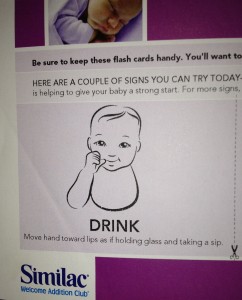This article originally appeared in American Society for Deaf Children’s The Endeavor, Fall 2010.
I saw a post on Facebook recently that made me pause. A friend wrote that she had told her two-year-old son, “Mommy’s ears are broken, cannot hear…can’t hear, I use my hands to talk.” Her son then looked inside her ears to “see” what was wrong.
As the parent of three Deaf children under the age of two, I thought this was a cute anecdote. I also liked how she said, “I use my hands to talk.” But what made me pause was the mention of “broken.”
Let me go off in another, but relevant, direction. In recent issues of Reader’s Digest, which I have read faithfully since I was yea high, there were letters from parents of deaf children who proudly proclaimed that their children never let being deaf stop them. While I understood where the parents were coming from, I thought to myself, “Why in the world would they think in that framework?” [Read more…]
